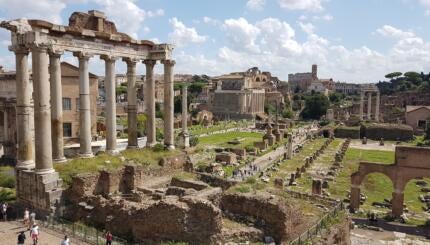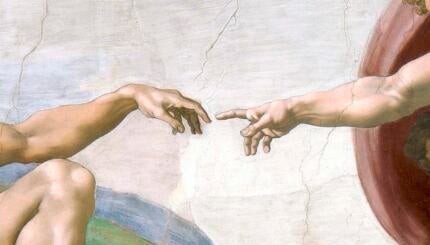Twenty-two years ago this week, I stepped on to a bimah, offered a blessing, chanted four sections of Parashat Emor, and became the first woman in my family to become a bat mitzvah. I was 12 and proud — proud to do what no one in my family had done before, proud to have mastered the prayers and Torah chanting, proud to become a Jewish adult.
My rabbi had opted to have me chant only verses from the 23rd chapter of Leviticus, in which Moses offers an overview of the major Jewish holidays. Even though I knew chapter 23 was part of a larger Torah portion, I never studied the rest. I only knew that they concerned animal sacrifice. So in my speech, I spoke about sacrifice in the modern age and how we might modernize our traditions for the 21st century. (Yeah yeah, future Reconstructionist rabbi.)
My childhood rabbi died when I was in college, but I wish I had the opportunity to ask him why he made the choice he did about my reading. Why didn’t he have me begin, as he might have, with Leviticus 22:17-20, which details the sorts of defects unacceptable in sacrificial animals? Was he worried about grossing me out? Worried that I wouldn’t find anything to connect with? Worried that the adults present would shake their heads at the gruesome nature of our traditions?
To be fair, there is some gruesome stuff in there, graphic description of the sorts of defects that make both the sacrificer and the sacrificial animal ineligible, heavy restrictions on the sorts of relationships that are acceptable for priests, and the infamous “eye for an eye, tooth for a tooth” rhetoric. Talking about these verses with anyone, much less a tween, is daunting, and I can certainly understand the desire to keep the focus on the good.
With your help, My Jewish Learning can provide endless opportunities for learning, connection and discovery.
The Judaism of my childhood was largely focused on the good — and for that I give my rabbi credit. He made Jewish community something grounded in love and joy, and it’s probably in large part because of that that I became a rabbi. My strongest memories of religious school are of making challah, learning Debbie Friedman tunes, writing poetry and prayer, and trying to break the previous year’s record for longest paper chain on Sukkot. Growing up Reform, and with many other interfaith families like mine, I felt little tension around my Jewish identity. But I think there may have been a downside to a Jewish education focusing largely on the good stuff. How might my understanding of Judaism have been different if I had more exposure to the difficult pieces?
This is a tension we face throughout our Jewish lives. How do we balance the reality of the less savory parts of our sacred texts with the desire to keep ourselves in love with Torah? How do we reconcile the ancient Jewish values that continue to animate our lives with the sometimes wince-worthy practices of our ancestors? One way is to do what my rabbi did — to focus on the good as long as possible, assuming that once children are old enough, they will be ready for the more difficult passages. But I think there is a better way — to lean into the Jewish practice of sacred wrestling with the more challenging parts of our tradition.
This morning, one of the young people at my synagogue will celebrate his bar mitzvah. Like me, he will have the opportunity to teach the congregation about Parashat Emor. Unlike me, he’ll come to the bimah having studied the entire Torah portion in depth. In our conversations these last few months, we haven’t shied away from the difficult elements of these verses. We’ve spoken about the merits (or lack thereof) of “eye for an eye.” We’ve questioned the exclusion of priests with disabilities from participation in sacrificial rituals, and the cruelty of keeping the high priest from mourning even his closest relatives. We’ve talked about complex power dynamics between God, Moses and the Israelites. The speech he will give focuses on the need to be able to make one’s own decisions about what’s right while also maintaining fruitful relationships with the powers that be, whether that’s God (for the Israelites) or parents (for a middle schooler). I’m proud of him for it.
While it isn’t always easy to wrestle with the rough stuff, that may be one of the most important Jewish values we can pass on. So a challenge for you all this week. Do what I didn’t do until I was an adult. Read all of this week’s Torah portion. Grimace at the gross stuff. Wince at the wince-worthy stuff. Smile at the stuff you recognize. Take it all in, ask every question, and trust that each of your feelings is worthy.
This article initially appeared in My Jewish Learning’s Shabbat newsletter Recharge on May 14, 2022. To sign up to receive Recharge each week in your inbox, click here.



